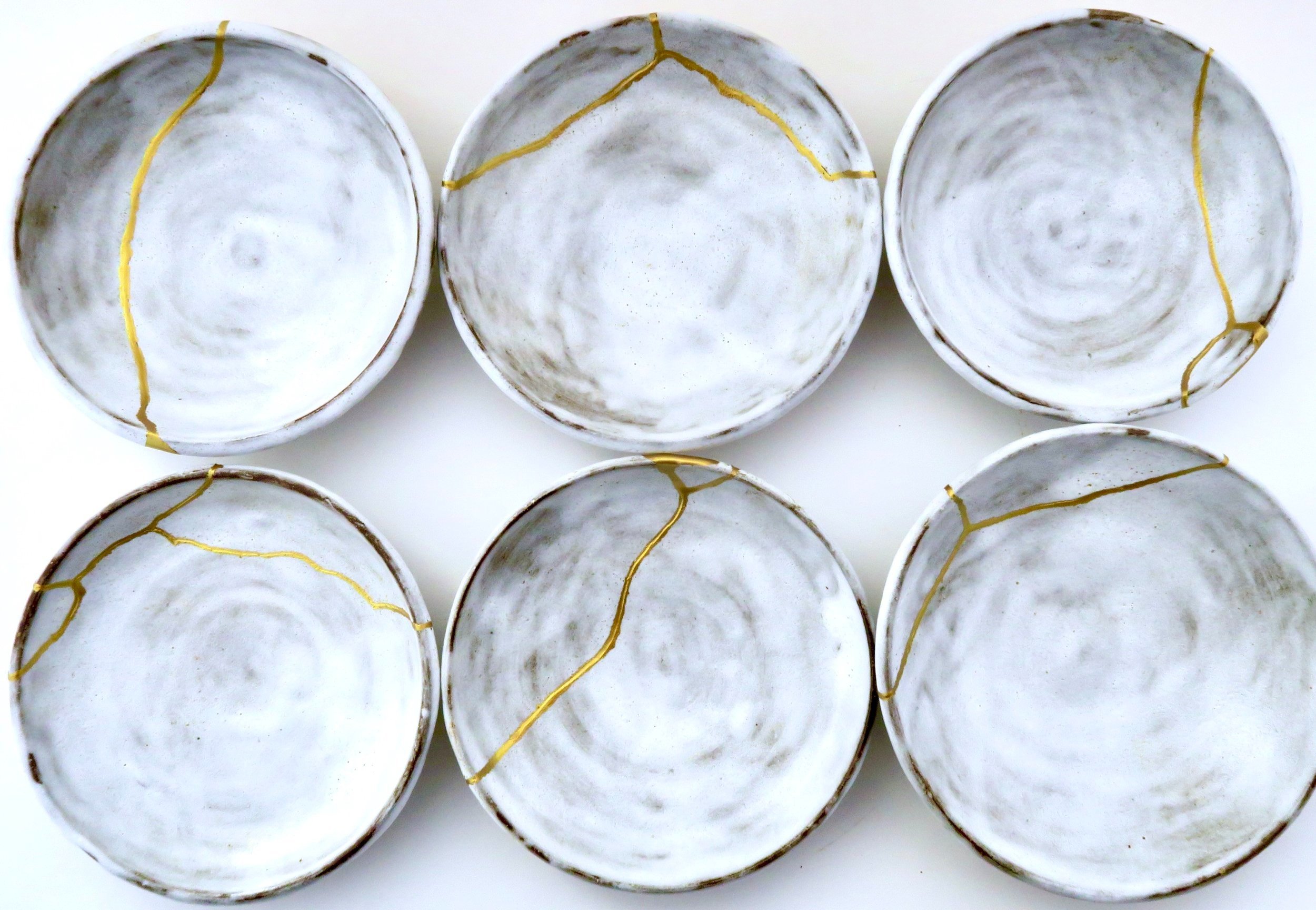Kintsugi: An exploration of history
So the story goes… About 600 years ago, the Japanese tea master Sen Rikyu broke a ceramic tea canister in a fit of rage after a rather disappointing tea ceremony. An associate dug the broken bits out of the trash and commissioned an artist to fix the canister. The artist was instructed to repair it in such a way that would make it even more beautiful than it was before it was broken. In Japanese, kin translates to gold and tsugi translates to joinery. Hence, the art of kintsugi, or golden joinery, was born.
Kintsugi honors our journey: the roads we have traveled and the ways we have been broken. As we heal, that which emerges within us is unique in its wholeness. These experiences and the ways they change us can turn into our most valuable assets. No two breaks are the same, no one remains unblemished in life. This is the art of kintsugi.

All ceramics that have been repaired by Puro Kintsugi are done so using traditional kintsugi methods and materials. Urushiol, the same oily, organic substance that is found in poison ivy and poison oak is used as a binder and a lacquer. When it dries and cures, it is non-reactive.
Because of this, each repair takes approximately 6 weeks to complete so that the lacquer can cure in between phases. Robin uses time-honored methods and materials to repair each piece. She considers traditional kintsugi to be a form of active meditation, and believes this quality shows in the work.
Pieces repaired with aluminum based gold are not food safe. Pieces repaired with 22k gold are food safe. None are microwave safe. Please hand wash gently with mild soap and water.
As with life, shifting from broken to beautiful is a slow and careful process. Thank you for visiting Puro Kintsugi.
